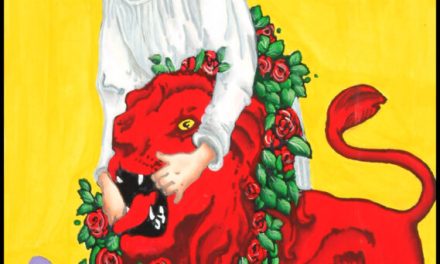New Book! ‘The Grand Communication: Freemasonry’s Alchemical Quest for Divine Communion’
Editor’s note: Tria Prima is excited to bring you Nathan Schick’s new book The Grand Communication with a forward written by our very own Jaime Paul Lamb. Cover art by our talented brother Travis Lawrence of Infinity Prints. We believe this book will be an instant classic for any Mason with an interest in Alchemy and Hermeticism.
I teach a range of religious studies classes including thematic courses like “Religion & Pop Culture” and “Magic, Witchcraft, & Healing”. One semester, my class was discussing magic in the context of religion and popular culture, and the conversation turned to the Harry Potter franchise. A student asked: “Why was the 1st Harry Potter book called ‘Harry Potter and the Philosopher’s Stone’ in England, but changed to ‘Harry Potter and the Sorcerer’s Stone’ in the US?” Other students enthusiastically responded, providing details about everything from the publisher to cultural considerations to film editing, reciting facts they knew from memory.
But when I asked them what they knew about the history of the concept of the “Philosopher’s Stone”, they were dumbfounded. When I went on a tangent to give some context about the connection to alchemy, Hermes, and secret societies, I could tell I had their full attention. Without any prompting, they came to class over the next few weeks reporting new facts and details about the Philosopher’s Stone they had discovered and new questions about the history of how magic and science had diverged. My students are often undertaking rigorous training for careers in hard sciences. Yet they are clearly in tune with an enchanted view of the universe and the natural world. They love pop culture which contains an element of magic and they are curious about the unknown and methods by which to investigate.
By looking at early Freemasonry, we return to a world of enchantment and magic which starts to establish rules by which scientific methods of investigating the unknown will come to be seen as legitimate.
As a Freemason, I knew the Craft had a treasure-trove of symbols connected with Hermeticism. I also knew that many of the Brethren were not familiar with the Hermetic content embedded in the initiation rituals. The winding history of early Freemasonry connects monarchs, wars, global exploration of new worlds, scientific discoveries of new animals, plants, and minerals, the establishment of the Royal Society, and a network of underground natural scientists. This is a juicy history full of intrigue!
By looking at early Freemasonry, we return to a world of enchantment and magic which starts to establish rules by which scientific methods of investigating the unknown will come to be seen as legitimate. Homing in on the symbols of Hermes, we see a brilliant method of encrypting messages to those who can decrypt them while leaving the symbols illegible to others. By examining the quest for the Philosopher’s Stone, we return to a time when societies were deeply divided along religious and political lines and people longed for something which could heal the divisions, soothe the anger, and restore peace and unity to society. Without revealing any secrets, The Grand Communication is meant as an approachable primer to take the reader through the Hermetic current ingeniously woven into the fabric of Freemasonry. By examining this history, we can pose questions about investigating the unknown and how to build harmony and unity in our own societies today.
Nathan Schick
Nathan Schick is a faculty member in the School of History, Philosophy, and Religious Studies at Arizona State University. He has been a Freemason and active member of Glendale Lodge #23 since 2017. He is a master ritualist and master lecturer under the Grand Lodge of Arizona. He has been avidly homebrewing beer, cider, and wine for over a decade.
Praise for ‘The Grand Communciation’
“The Grand Communication: Freemasonry’s Alchemical Quest for Divine Communion” is a must have for any Freemason or for those wishing to learn more about the syncretic design of the fraternity. Schick’s nuanced and lucid narrative masterfully uncovers Freemasonry’s rich historical tapestry, much of which has been shrouded in the mists of time for the contemporary Mason. His compelling prose draws back the veil on the forgotten lore, making it accessible to both the novice and the seasoned Mason. “The Grand Communication” is more than just a book – it is an essential companion to the Masonic degrees, expanding on the fraternity’s philosophical, alchemical, religious, and mystical dimensions with acute precision and depth. Simply put, Nathan Schick’s “The Grand Communication” is an investment in knowledge that promises to reward the reader with a profound understanding of the Freemasonry’s timeless pursuit for Truth and Light.
In “The Grand Communication: Freemasonry’s Alchemical Quest for Divine Communion” Schick, with great enthusiasm and love of the subject, throws his hat into the much discussed, debated, and vigorously contested topic of the early years of Freemasonry and the meaning of its unique set of rituals. Taking the view that Masonic rituals are meaningful sets of symbols, Schick takes us by the hand down the twisting and winding road of Hermeticism, European occultism, the myth and magistery of alchemy, and finally the ale houses of colonial A
This book is of interest and importance to any Freemason, or aspiring Freemason, as well as any interested in the history and symbolism of the esoteric fraternities of the West. Brother Schick’s insights, articulated by way of his academic background, culminate in a series of consequential revelations concerning the alchemical and spiritual nature of Freemasonry and its rituals. Within these pages is a thorough and compelling history of Masonry, by which we may come to an ever-deepening understanding of our traditions, that the Light of Masonry be yet extended, and the Craft profit thereby.
Excerpt:
The Hiramic Legend of Freemasonry sets the death and resurrection of the hero as Hiram Abiff and the location at the building of King Solomon’s Temple in Jerusalem. Certain key features are emphasized, such as the exchange between two distinct and autonomous kingdoms, between whom envy, discord, and confusion might naturally exist, are found to establish good relations through exchange and the strength and harmony created by paying each fairly and justly. These conditions allow for the building of the Temple to the Almighty God, by whichever name used – Israelite and Tyrian alike could approach the altar and worship in peace and good fellowship. In the aftermath of the Thirty Years War and the English Civil War, these ecumenical values were highly attractive. They helped soften the bitter edges of division in societies exhausted from years of bloody religious and political conflicts.
The choice of Hiram and the attached Hebrew term of “Abi” as both “my father” and “my master” ties directly into the description Elias Ashmole gives in the commentary at the end of his personal manuscript copy of Theatrum Chemicum Brittanicum about how he was “adopted” by his Alchemical “father”. The alchemical notion being that the adoption allows for an apprenticeship over an extended period with a more experienced paternal figure overseeing the work as the skills of mastery are slowly developed and the deeper secrets revealed. The secrets are then passed down over the generations to “adoptees” who are found worthy seekers.






